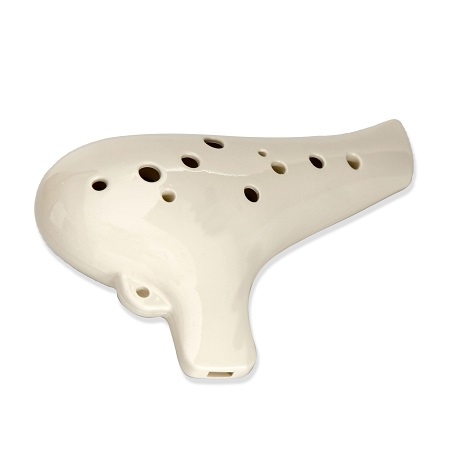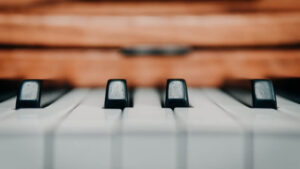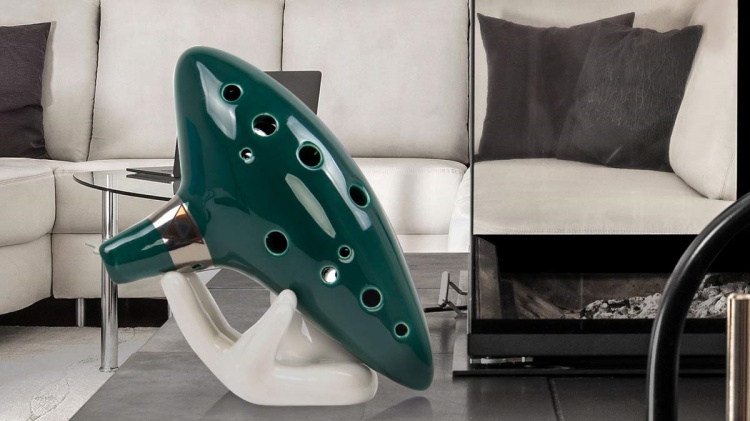
Exploring the Mystical Sounds: The World of the Ocarina
The ocarina is an ancient wind instrument known for its otherworldly and evocative sound. With a history spanning over 12,000 years across cultures worldwide, the

Ah, the soothing strains of a violin, the thunderous crescendo of an orchestra, and the timeless melodies that have resonated through the ages—this is the enchanting world of classical music.
So, what is classical music, you ask? Well, let’s embark on a melodious journey to discover the heart and soul of this remarkable art form.
Classical music is like a time-traveling maestro, whisking us away to bygone eras and stirring our emotions with its harmonious magic.
In this exploration, we’ll venture into the history, characteristics, and instruments that define classical music.
We’ll also compare it with its modern counterpart, pop music, and unravel the exquisite charm of classical instruments, including the unconventional ocarina.
Finally, we’ll ponder the enduring legacy of classical music and how it continues to shape the world of music today.
Classical music’s story begins centuries ago, where it played a role in the courts of emperors and the chapels of churches. We’ll trace its evolution from its modest origins to becoming the grand symphonies and concertos we know today.

The roots of classical music can be found in the distant past. From Gregorian chants to medieval compositions, the foundations of this genre were laid with simplicity and reverence. These early echoes set the stage for the grandeur that was to come.
With the Renaissance came a rebirth of creativity and exploration, reflected in the music of the time. Composers like Josquin des Prez and Palestrina crafted intricate polyphonic compositions that paved the way for the complexity of classical music.
Mention names like Beethoven, Mozart, and Bach, and you’ve entered the hallowed halls of classical music’s most celebrated composers. Their contributions have shaped the genre, and we’ll uncover the magic they brought to the world.
Ludwig van Beethoven, often regarded as a musical revolutionary, left an indelible mark on classical music. His symphonies, like the iconic Symphony No. 9, broke new ground and continue to inspire awe and admiration.
Wolfgang Amadeus Mozart, a child prodigy and prolific composer, composed symphonies, operas, and concertos that are timeless classics. His musical genius knew no bounds, leaving a legacy that transcends the ages.
Classical music thrives on a rich tapestry of instruments, each with its unique voice. From the grandeur of the piano to the elegance of the cello, we’ll explore the instruments that create the symphonic magic.
From the ornate beauty of the Baroque era to the precision of the Classical period, and the impassioned Romantic era, classical music’s journey through time is marked by distinct styles.
We’ll take a symphonic tour through these captivating epochs.
The Baroque era, with its elaborate ornamentation and intricate compositions, introduced us to the likes of Johann Sebastian Bach and Antonio Vivaldi. We’ll unravel the splendor of this era’s music.
The Classical period, with luminaries like Mozart and Haydn, brought us elegant and balanced compositions. We’ll explore the grace and refinement that characterize this era.
The Romantic era, with its passionate and emotive music from composers like Chopin and Tchaikovsky, took classical music to new emotional heights. We’ll dive into the expressive power of this period.
Each era brings a unique soundscape to classical music. We’ll listen to the echoes of Baroque harpsichords, Classical elegance, and Romantic grandeur, understanding how the music of the time reflects the spirit of the age.
Baroque music, often adorned with harpsichords and intricate counterpoint, transports us to a world of grandeur and opulence. We’ll immerse ourselves in its distinctive soundscape.
Classical compositions, with their balanced phrases and structured forms, create a soundscape of grace and harmony. We’ll savor the serenades of this era.
The Romantic era’s music, characterized by its sweeping melodies and emotional intensity, paints a vivid sonic landscape. We’ll journey through the reverie of this passionate period.
Now, let’s don our detective hats and compare classical music with its modern counterpart, pop music.
We’ll unravel the differences in style, rhythm, and audience to appreciate the distinctive charm of classical melodies.

Classical and pop music represent two distinct universes of musical style. We’ll examine the intricacies of these styles and how they shape the music we love.
Classical music’s tempo is like a measured heartbeat, while pop music makes us tap our feet to catchy beats. We’ll explore the rhythmic contrasts between these genres.
Orchestras and bands—two diverse worlds of music. We’ll pit them against each other in a friendly face-off, exploring their strengths, weaknesses, and the genres they excel in.
Orchestras, with their symphonic grandeur and vast instrumental diversity, create a sonic tapestry like no other. We’ll discover the symphonic powerhouses that define classical music.
Bands, with their smaller ensembles and contemporary flair, captivate us with their pop and rock anthems. We’ll delve into the world of bands and their enduring appeal.
One of classical music’s most iconic instruments is the grand piano. It deserves a spotlight as we explore its rich history, exquisite craftsmanship, and its pivotal role in classical compositions.
The violin, with its beguiling sound and graceful form, is the heart of many classical pieces. Let’s dive into its history, virtuoso players, and the mesmerizing music it creates.
Let’s uncover the mysteries of this charming instrument.

classical music is not merely a genre; it’s a timeless gift to humanity that continues to enchant generations. Its ability to convey emotions, tell stories, and transcend time is a testament to its enduring appeal and universal language.
Classical music transcends cultural boundaries, speaking directly to the human soul and fostering understanding among people from all walks of life.
Its echoes resonate in contemporary compositions, film scores, and even popular music, showcasing how classical music’s legacy lives on in the music of today.
As you explore the world of classical music, you’ll find yourself immersed in a symphony of emotions, whether you’re a seasoned connoisseur or a curious newcomer. It offers a gateway to a world of beauty, passion, and artistic excellence that continues to enrich our lives.
Classical music resonates with the deepest recesses of our souls. It provides solace in times of sorrow, joy in moments of celebration, and a soundtrack to the human experience.
So, what is classical music? It’s an enchanting journey through the realms of human creativity and expression—a timeless art that resonates with the soul. Allow its melodies to sweep you off your feet, and let the magic of classical music serenade you through the ages.
Whether you’re drawn to the elegance of the piano, the soulfulness of the cello, or the unconventional charm of the ocarina, classical music invites you to immerse yourself in a world of timeless beauty.


The ocarina is an ancient wind instrument known for its otherworldly and evocative sound. With a history spanning over 12,000 years across cultures worldwide, the

When it comes to taking care of your musical instruments, ocarina requires special attention, especially in terms of disinfection. Whether you’re a professional musician or

When it comes to preserving the charm and sound of your ocarina, storage is key. Just like a treasured book or a fine wine, your

The world of music is filled with diverse and captivating instruments, and among them, the ceramic ocarina stands as a unique and charming creation. With

The ocarina is an ancient wind instrument known for its otherworldly and evocative sound. With a history spanning over 12,000 years across cultures worldwide, the

When it comes to taking care of your musical instruments, ocarina requires special attention, especially in terms of disinfection. Whether you’re a professional musician or

When it comes to preserving the charm and sound of your ocarina, storage is key. Just like a treasured book or a fine wine, your

The world of music is filled with diverse and captivating instruments, and among them, the ceramic ocarina stands as a unique and charming creation. With
Copyright © 2024 echofluteocarinas. All Rights Reserved.